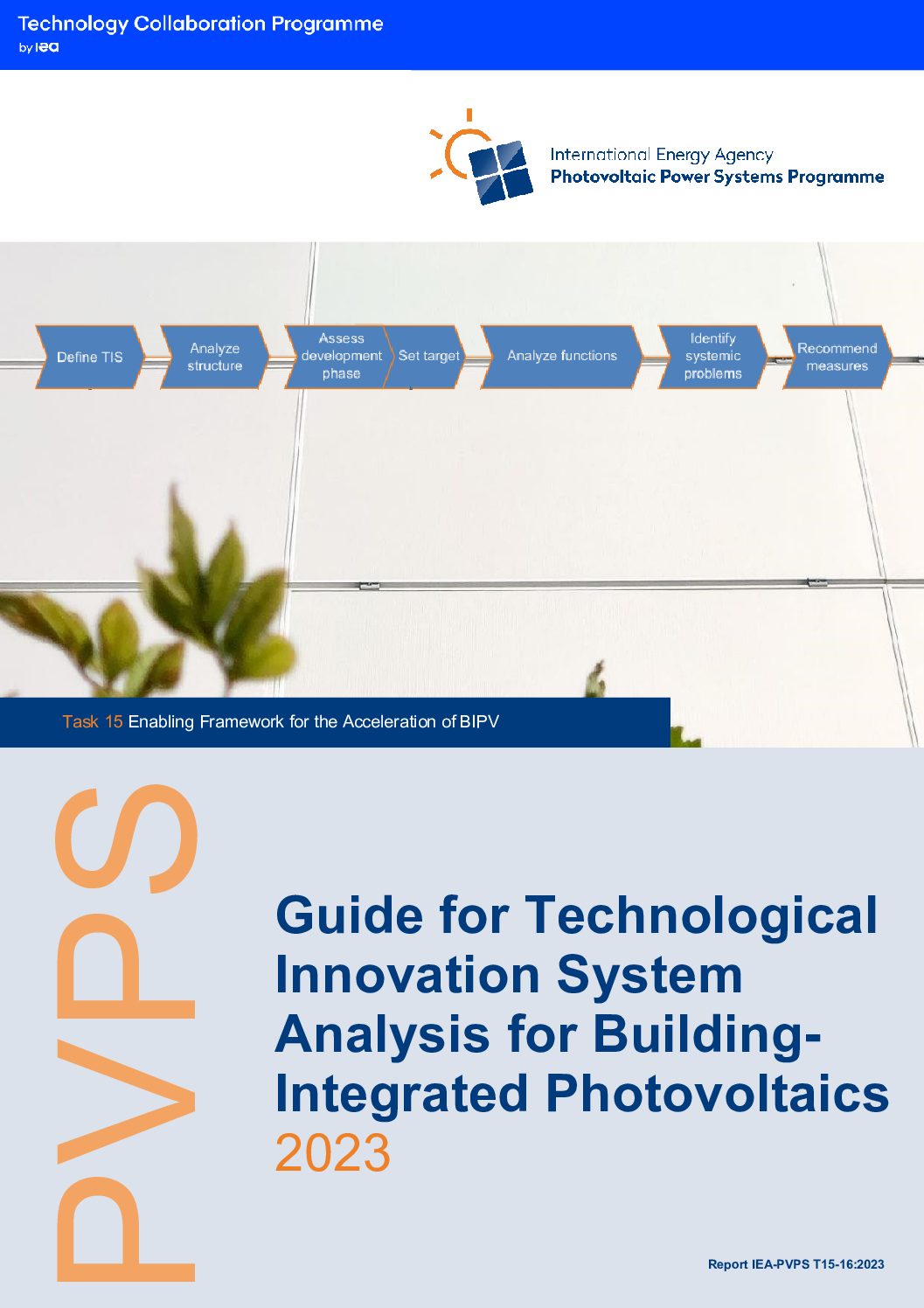This Guide for Technological Innovation System (TIS) Analysis for Building-Integrated Photovoltaics offers hands-on support on theory and methods for those who want to analyse the innovation system for BIPV in their country. It describes the general process steps to perform a TIS analysis and the specific choices and methods used by Subtask A of IEA PVPS Task 15. In this way it allows for future TIS-analyses to be made in a comparable way to the national studies published by Task 15, either by covering new countries or by timely updates of the TIS in the same countries.
Apart from being a guidebook for the analyser, this document can also be used as a template for a final TIS-analysis report – using the same (sub-)chapters, tables, and graphs.
The initial definition of the common scope of the TIS studied consists of Building Integrated PV modules and systems as well as PV modules and systems for aesthetical integration. Where relevant, national studies can adjust or deepen the scope by separately analysing different market segments or by excluding certain sub-technologies or application types. The latter can be relevant for example due to cultural or historical reasons.
Starting from the scope defined, this guide describes how to analyse and describe the structure of the TIS, through its actors, networks, and institutions (regulations, cultural norms, etc.). Based on that structure and the market situation, an assessment is to be made of the market development phase for BIPV in general or for different application types. Next, a development target should be defined so that the current TIS can be evaluated in relation to that target.
The main part of the TIS-analysis is performed after defining the target, by analysing the performance of eight functions of the TIS: Knowledge development, Knowledge dissemination, Entrepreneurial experimentation, Resource mobilization, Development of social capital, Legitimation, Guidance of the search, and Market formation. The meaning of each function is explained and key indicators, as well as assessment questions, are listed. These indicators and questions assist the reader in her/his assessment of whether the function is sufficiently fulfilled for the TIS to achieve the set target.
For those functions that are not fulfilling the target requirements, guidance is given on how to identify systemic problems that either relate to actors, institutions (hard and soft), interaction between actors, or to infrastructural deficits.
Finally, the guide describes the need of, and some advice on how to arrive at recommendations for a possible overcoming of problems and weaknesses in order to reach the set target. Recommendations should address both industry actors and policy makers.
The main authors have identified the following 3 Key Takeaways from the report:
- This report proposes a common standard for analysis of the technological innovation system (TIS) for building integrated photovoltaics (BIPV).
- The report describes the main background and methodology on how to identify systemic weaknesses for BIPV development.
- The report leads the way to propose supportive actions expected to mitigate systemic weaknesses and strengthen BIPV technologies and markets.
